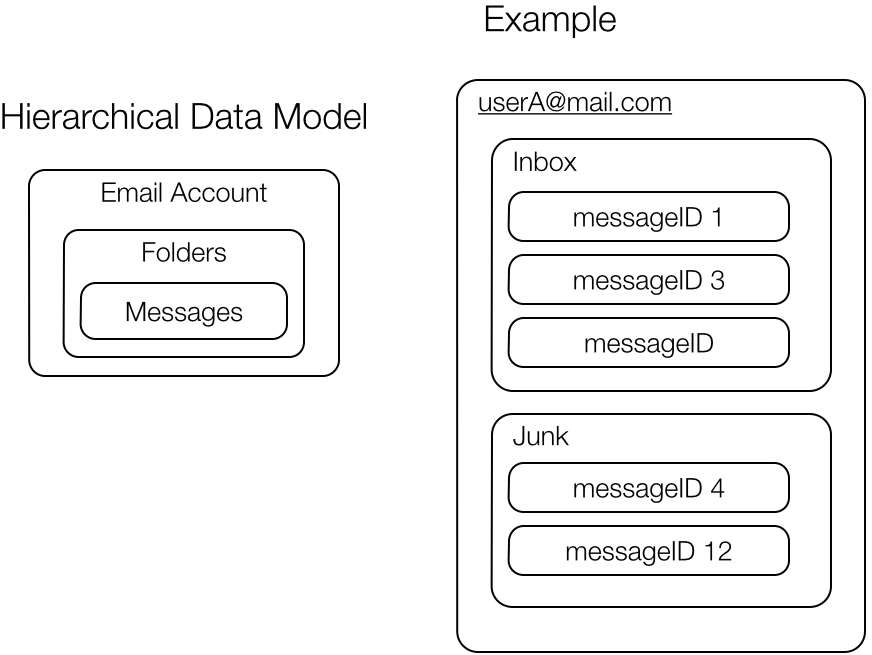Chapter 8. Table Design
Accumulo provides application developers with a high degree of control over data layout, which has a large effect on the performance of various access patterns. Here we discuss some table designs for various purposes and address particular issues in designing keys, values, and authorizations.
Single-Table Designs
Some applications require looking up values based on a few specific pieces of data most of the time. In these cases it is convenient to identify any hierarchies that may exist in the data and to build a single table that orders the data according to the hierarchy.
For example, if we are writing an application to store messages, such as email, we might have a hierarchy that consists of user accounts identified by unique email addresses. Within a user account we have folders, and each folder contains zero or more email messages (Figure 8-1).
In addition to natural hierarchies in the data, we also need to consider access patterns. A common query will be to access a list of messages to or from a user within a particular folder, preferably in time order from most recent to oldest.

Figure 8-1. Hierarchy in data
An example application method for fetching this data can look like the following:
listMessages(emailAddress, folder, offset, num)
where emailAddress is the user’s email address, folder indicates which mail folder to access, and offset and ...
Get Accumulo now with the O’Reilly learning platform.
O’Reilly members experience books, live events, courses curated by job role, and more from O’Reilly and nearly 200 top publishers.

